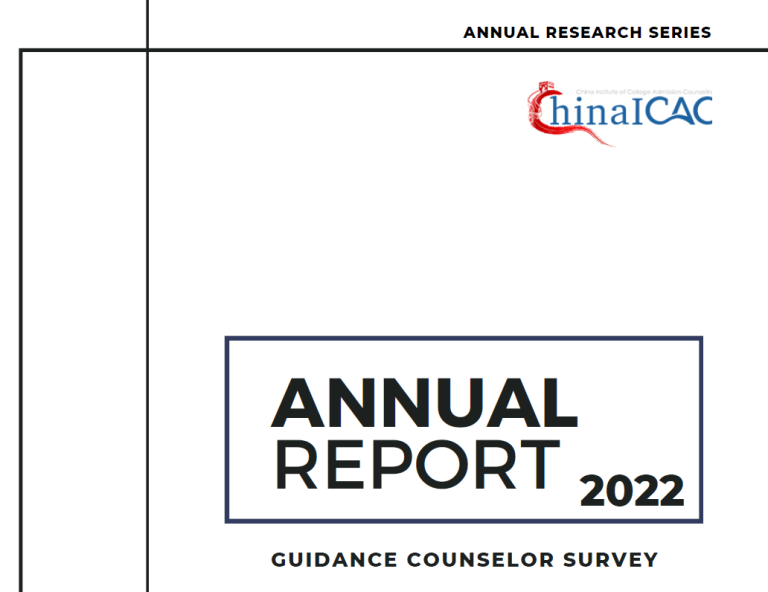

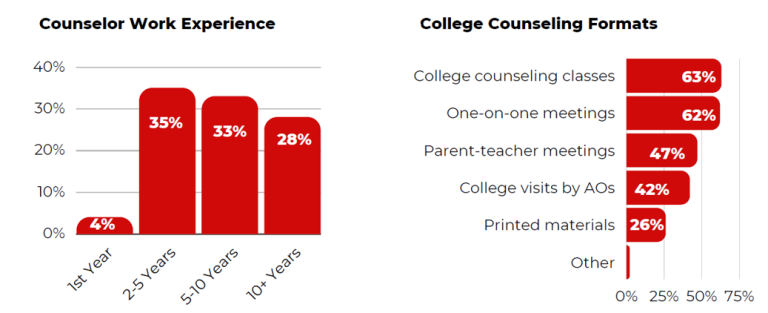
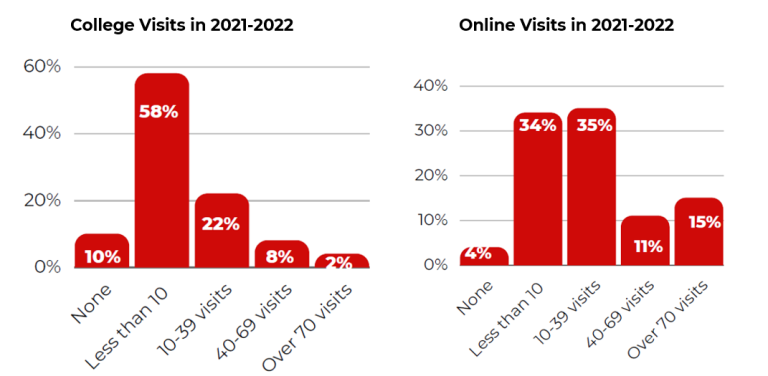
Wide variation in in-person and virtual visits/presentations

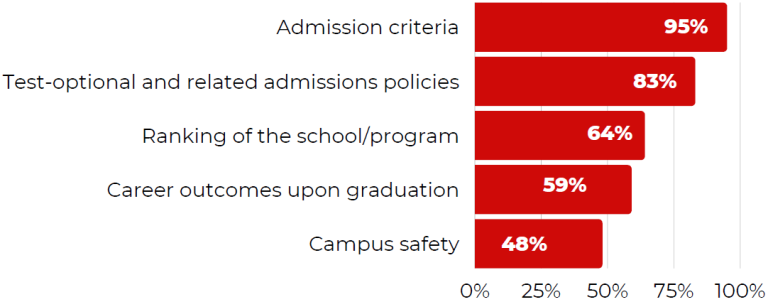




The US leads the way at application & enrollment



71% of counselor reported increased interest in global campuses.
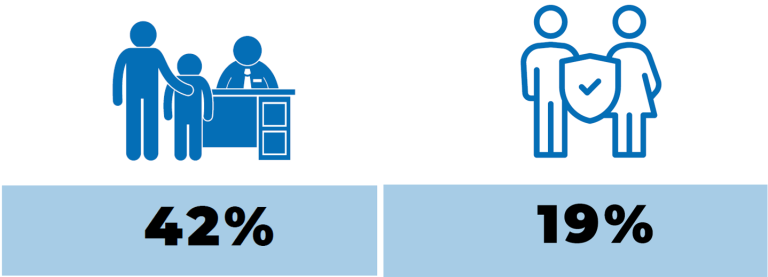
Parents appear to have strong involvement/opinion on location of study

Ranking is the no. 1 driver for students (above) and parents (below)
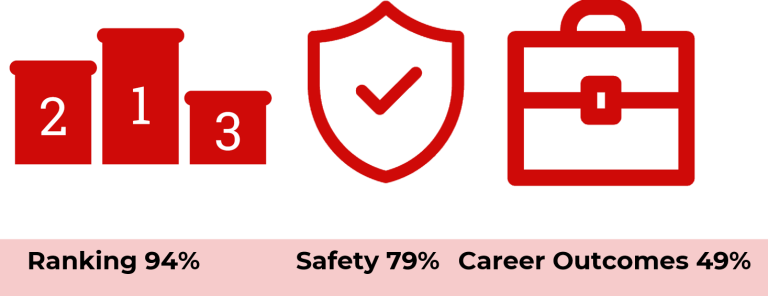



Insight from Chinese High School counselors
High Schools are a key source of international students and High School Counselors are vital professionals in guiding students as they navigate the complex study abroad application process.
Despite this it's rare to get insights from the viewpoint of these key individuals within the overseas study eco-system.
We’re therefore delighted to share insights from Chinese High School Counselors, courtesy of the inaugural ChinaICAC Guidance Counselor Survey.
Sincere thanks to Ruby and ChinaICAC for agreeing to allow us to use the data from the report and on the fantastic work putting together their paper. We're already looking forward to the second edition!
What is in the survey?
121 individual guidance counselor survey responses covering:
- 2021-2022 academic year college enrolment data
- 91 High Schools represented
- 17,572 reported student enrolments (all schools and years)
- Schools from 1st tier (45%), new 1st tier (35%), 2nd (12%) and 3rd tier cities (8%)
The Counselors
Experienced professionals, dealing with multiple stakeholders and deploying a variety of methods to counsel students.
More than 60% surveyed have over 5 years of counselling experience and only 4% were in their first counseling cycle. This suggests limited staff turnover and good opportunities to form long-term relationships.
Counseling activities & materials
Counselors use a variety of formats, classes, 1-2-1 and sessions with parents.
Visits/presentations from schools are a significant part of the counseling process, but there is wide variation volume of visits institutions make anythwhere from none at all to over 70 visits per year depending on the high school.
Online presentations, with their relative cost efficiency, are more frequent than in-person visits, though variation in volume is still big.
Printed materials still have a place for 26% of respondents.
Effective Ways to Recruit Students
In-person is still seen as the most effective for student recruitment, with college visits number one (80%), followed by college fairs (69%).
Provision of materials and online events is still very important due to conveniece, frequency and ease of access.
How to make your content work
Key items in delivering information/presentations were to keep it:
- Informative (USPs, info not easily found on your website)
- Engaging (make it interactive!)
- Passionate (your energy transfers to counselors/students)
Most useful content - Clear admissions criteria!
We hear it again and again around the sector from organisations placing students. Despite this many universities still have unclear or seemingly inconsistent entry requirements.
Being able to accurately advise on requirements/chance of admission success is very important for trust in the counselor student relationship.
Rankings info continues to be a highly requested information area, whilst careers outcomes continues to grow in profile in students and parent decision making.
Email still no.1 method for contacting counselors
At 52%, email still just about king, though social media (34%) isn't so far behind, while 12% prefer phone/video call.
2022 was a tough year for counselors
62% of counselors rated their stress level as high, with a score of 4 or 5 on the scale (1-5 where 5 was extremely stressful). This was down to:
1. Covid (76%). Policy changes, struggles to get tests, safety & travel concerns of students/parents made it an exceptionally challenging year.
2. Heavy workload (71%). No doubt exacerbated by Covid in 2022 but it's important to remember that advising students can be a labour intensive at the best of times and schools aren't always well resourced.
3. Battling the "ranking phenomenon" (47%). 95% of counselors don't see ranking as a key factor. They prioritise the more holistic best "fit". However, given students, parents and employers still place great weight on it, the challenges for counselors in overcoming this bias are obvious.
What does this mean for institutions?
- Have a strategy for your high school outreach
- Observe data in your high school recruitment
- Develop/maintain relationships with counselors in schools
- Providing the right materials & support to counselors is key
- Helping promote best fit could loosen the grip rankings have on decision making
Think about how many high schools you work with, geographic spread and resource available. Consider levels of in person and virtual activity.
Monitor recruitment from high schools, look at trends by school, region, subject and entry requirements.
Nurture relationships with counselors, by communicating and supporting them so itos easier for them to counsel to your school.
There are many out there who want to overcome reliance on the very narrow view rankings provide on institutions. A concerted and collective effort to move away from this should have some impact.
Application trends - Asia the 3rd most popular destination
There is a clear dominance of interest for the United States from students applying from the responding high schools.
The dominance at application was even more profound at enrollment than it was at the application stage.
The US went from 57% of applications to taking 65% of enrollments. Whilst the UK had 29% of applications, it ended up with a 21% share of enrolments.
It's likely, given the timing of the cycle, that Covid drove up UK applications early on, as it was one of the few countries with borders open for international students, but that when the US allowed students to enter the US again for study, that an original preference for the US resulted in higher conversion of students to the US than for the UK.
Interestingly, Asia comes in as the 3rd most popular destination for both applications and enrolments. Whilst at 7% it's a long way behind the US and the UK, it's still no.3 and a trend widely talked about in recent months. It certainly wouldn't have been this high a few years back, and it'll be interesting to see how this trend develops, particularly given the more aggressive moves to recruit international students being made by countries is East and South East Asia.
A high proportion of students apply to more than 1 country
In-line with research in from various sources, we appear to see an ever-increasing number of students applying to more than 1 country. This trend, already establishing itself pre-pandemic, appears to have thrived through the pandemic and seems unlikely to go away, even if it may settle down temporarily with stabilising travel and immigration rules.
The most popular choice for students applying to more than one country was the UK and the US, followed by US & Canada. Interestingly the 3rd most popular combination was applications to 3 countries (US, UK & Canada), whilst the 4th most popular combination being the UK and Hong Kong.
TNE options in China increasing in popularity
When asked whether they had seen an increasing trend in enquiries for global campuses in China nearly 3/4 said they had seen growing interest.
Most reported that this interest had come from discussions where the parent were involved, with 19% saying the interest had come mainly from the parent. Safet and cost likely factors here.
This trend isn't a new one and confirms what we can already see looking at the success and fast growing numbers of campuses such as those of the University of Nottingham in Ningbo and The University of Liverpool's campus with Xi'an Jiaotong in Suzhou.
Most popular subjects
When asked for the 3 most popular fields of study, they responded:
- STEM (91%)
- Business (90%)
- Social Sciences (45%)
Who is most influential in the application process?
This is a complicated item, and even when one party is thought to be "the most" influential, that doesn't mean other parties aren't involved! We should also note that influence on the application process doesn't necessarily correlate to influence on final decision of where to study.
Counselors thought that most often it was the student (42%) was most influential in the process, followed by the counselors themselves (38%) and then parents (14%).
Student drivers
Rankings came out as the most common driver amongst students, followed by academic offering and then location.
Parental influence
When we look in detail at where parents are involved, then the picture gets more complicated.
It is clear that counselors see parents having a strong interest in Rankings, Safety and Career Outcomes.
On reading the full paper, parent involvement appears quite frequently.
Where are parents involved?
Application process - Counsellors report 76% of parents are involved with the application process, of which 17% are extremely involved. 47% of counslors report that parent teacher meetings are a utilised counseling format.
Location - We covered increased interest in global campuses in China earlier and heard that in 42% of these instances parents and students were asking about it, but that for 19% it was parents showing the majorty of interest.
This interest in location extended to beyond China when counselors report that 71% of parents had an increased interest in Asia and 56% of parents had an increased interest in the UK.
Counselor advice
We have counselors offering a key piece of advice in combatting the rankings phenomenon. "Counselors emphasized the importance of involving parents and educating them on alternative factors that should be considered when evaluating study abroad options.
Parental information sources - Agents play a role
The counselors indicate that the most important sources of information for parents are friends (73%), WeChat articles (67%) and agents (66%).
The survey also notes that 24% of high schools believed most students were also using agents in the application process.
Conclusion - Don't underestimate parental influence
It feels, to me that the influence of parents is perhaps stronger than indicated when only 14% consider the parents to be the biggest influence.
This feels natural, as we are dealing with high school students rather than prospective graduate students. I suspect parental involvement relating to costs are significant too.
On balance, I'd personally recommend that the parent view is strongly considered when producing materials for prospective UG students. Institutions who are able to effectively engage with parents and receive positive feedback in parental social networks should perform well in the long-run.
Higher Insights Ltd. / 19 Townsfield, Silverdale, Carnforth, Lancashire / Company number 14686043
© Copyright. All rights reserved.
We need your consent to load the translations
We use a third-party service to translate the website content that may collect data about your activity. Please review the details in the privacy policy and accept the service to view the translations.
